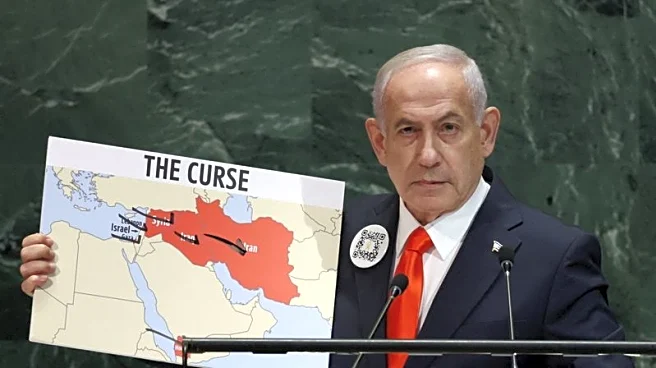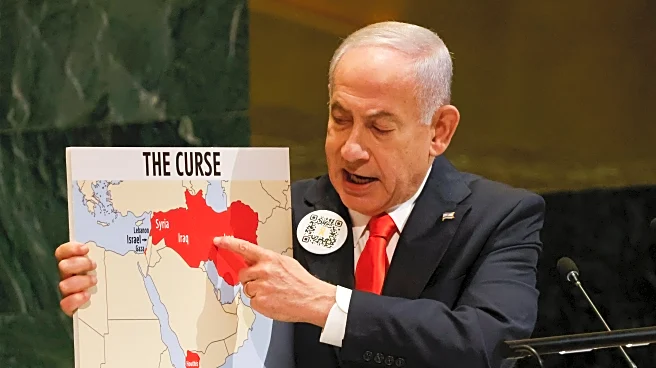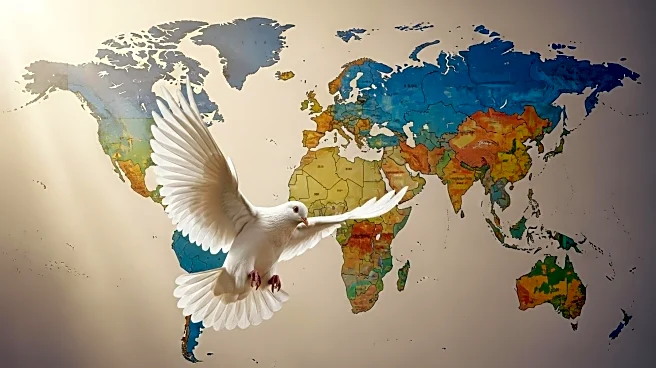What's Happening?
President Trump has unveiled a 21-point Middle East initiative aimed at ending the war in Gaza and fostering broader peace in the region. The plan includes the removal of Hamas from power, the destruction of its offensive weapons, and the establishment of an alternative administration in Gaza. It also proposes reforms by the Palestinian Authority to strengthen its institutions before taking over Gaza's management. However, Israeli Prime Minister Benjamin Netanyahu has expressed opposition to certain clauses, including those that open a path to a Palestinian state, viewing them as a de facto two-state solution. Netanyahu is also against allowing Hamas members to return to Gaza and insists on applying Israeli sovereignty to parts of the West Bank, a move President Trump has opposed due to international pressure.
Why It's Important?
The plan represents a significant U.S. effort to resolve longstanding conflicts in the Middle East, potentially altering the geopolitical landscape. If successful, it could lead to a reduction in hostilities and pave the way for a Palestinian state, impacting regional stability and U.S. relations with both Israel and Arab states. However, Netanyahu's resistance highlights the complexities of achieving consensus, as his government faces internal and external pressures. The plan's success hinges on the cooperation of various stakeholders, including the Palestinian Authority, Hamas, and international actors, each with differing agendas.
What's Next?
President Trump is set to meet with Prime Minister Netanyahu to discuss the plan further. The outcome of this meeting could determine the plan's viability and the future of U.S.-Israel relations. Meanwhile, Arab states that have accepted the plan may exert pressure on Hamas to agree, potentially influencing the group's stance. The international community will be watching closely, as the plan's implementation could have far-reaching consequences for peace efforts in the region.
Beyond the Headlines
The plan's emphasis on institutional reforms and de-radicalization programs reflects a broader strategy to address underlying issues in Gaza. The involvement of international experts in a transitional administration suggests a shift towards multilateral governance, which could set a precedent for future peace initiatives. Additionally, the plan's focus on humanitarian assistance and infrastructure rebuilding highlights the importance of addressing socio-economic conditions as part of conflict resolution.












